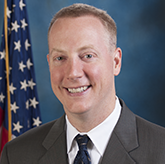Article
US Health Care Spending Swells to $2.1 Trillion
Author(s):
Disease prevalence and incidence is down, but the increase is driven by skyrocketing service price and intensity, and a growing, aging population
US health care spending has ballooned to $2.1 trillion — making up almost 18% of the US economy, and marking a $933.5 billion increase since 1996, according to a new report published in the JAMA Network.
Joseph Dieleman PhD

Joseph Dieleman, PhD
Study authors, led by Joseph L Dieleman, PhD, of the Institute for Health Metrics and Evaluation inSeattle, Washington, quantified changes in US health care spending associated with 5 fundamental factors: population size, population age structure, disease prevalence or incidence, service utilization, and service price and intensity.
50%, or roughly $583.5 billion of the increase was related to changes in service price and intensity. Population changes, including overall population growth ($269.5 billion) and an aging population ($135.7 billion) accounted for a combined additional 34.7% spending growth. Changes in service utilization were not associated with a statistically significant change in spending.
On the other hand, changes in disease prevalence or incidence were associated with spending reductions of 2.4%, or $28.2 billion. However, study authors acknowledged that the influence of this factor (and all factors measured in the study) varied by health condition and type of care. For example, decreases in prevalence of cardiovascular diseases were associated with 20.7% reduction in spending, but annual diabetes spending grew by $64.4 billion, with $44.4 billion of that growth coming from pharmaceutical spending.
Across all health conditions, the greatest annualized growth rates were in retail pharmaceutical spending and emergency department care, at 5.6% and 6.4%, respectively. The condition with the greatest absolute increase in spending was diabetes, which increased at an annualized rate of 6.1%. Low back and neck pain had the second-largest increase in health care spending, increasing at an annualized rate of 6.5%, or $57.2 billion. In absolute terms, this increase was concentrated in ambulatory care and inpatient care.
Patrick Conway MD

Patrick Conway, MD
Spending increases on the treatment of hypertension ($47.6 billion), the treatment of hyperlipidemia ($41.9 billion), and depressive disorders ($30.8 billion), were also notable, authors wrote.
“The findings from this report have important implications for US policy, payers, hospitals, clinicians, consumers, and others,” wrote Patrick H Conway, MD, MSc, in an editorial response to the findings, also published in JAMA. “First, the study again underscores that the United States is on an unsustainable growth path in terms of health care costs and must get costs under control, and highlights several of the potential levers.”
Conway argued that payers, hospitals and clinicians across sectors must work to control increases in prices related to service price and intensity — the major driver of increased spending.
“Some states, such as Maryland and Vermont, have approached this through multipayer payment models at the state level,” Conway wrote. “Another approach would be payers, hospitals, and clinicians partnering at the local level to control price increases — for example, to establish a contract that minimizes price increases, but that allows the hospitals and clinicians to be financially successful by meeting quality metrics and lowering total cost of care.”
Conway also pointed to costly scientific and technological advancements, and the importance of identifying which of these are truly associated with better outcomes, and which do not deliver patient benefits despite their cost.
Moreover, potential approaches to address pharmaceutical spending in the US include value-based purchasing, where drug payments are linked to health outcomes, reference-based pricing, where the price is set based on the reference product in a drug class, or indications-based pricing, where payments can be adjusted depending on indications with the strongest evidence base on improved outcomes.
“Presumably, the US health care system needs a tighter linkage between the health outcomes produced by a new drug and its price,” Conway wrote.
Finally, since the data ended in 2013, and much has changed in the last 4 years, Conway argued that an updated analysis is warranted. Additionally, the analysis was based on national data, but many of these trends can vary in state and local markets, he wrote.
“Overall, the report by Dieleman et al is a significant contribution to the literature and one of the most in-depth analyses of US health care spending and underlying associated factors,” Conway wrote. “Payers, policy makers, hospitals and clinicians, and others should consider these trends while embarking on decreasing the costs of the US health care systems and achieving a sustainable health system.”
The study, Factors Associated With Increases in US Health Care Spending, 1996-2013, was published in the JAMA Network November 7.




